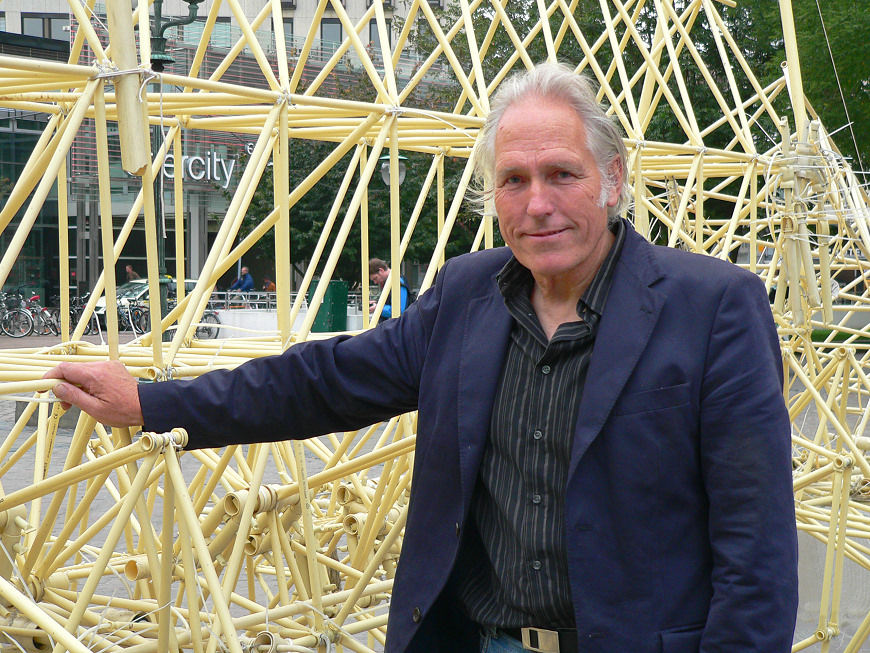
Photo by Axel Hindemith via Wikipedia, September 2007
Theo Jansen, whose work I was lucky enough to see taking a stroll on The Hague’s south beach this afternoon, has an interesting theory about the evolution of his Strandbeesten. The sight of Jansen striding up the beach, dragging his whirling plastic contraption and a swarm of curious onlookers with him, put me in mind of a Victorian showman advertising his circus. Jansen has made the wind-propelled creatures, constructed from PVC tubes and joints, his life’s work, but doesn’t intend to stop there. His ultimate ambition, he told an audience on the sands, is to distil his designs into a single creature that is wholly self-reliant and can live on after his death.
At what point can we deem a man-made creature to be alive, or even independent? Jansen’s creations are beautiful and graceful, but a long way short of intelligent. They can only move with the explicit intrusion of their creator, who points them in the right direction, loosens their sails and decides when they should stop. More sophisticated versions use compressed air or store wind in plastic bottles so they can walk in the absence of wind. And, of course, they cannot think, feed, or reproduce. But the last point brings us to Jansen’s theory.
He drew his audience’s attention to a symmetrical pair of Strandbeesten he called ‘the proboscis’. Instead of walking, the creatures have pointed noses that dance and sway in harmony, like interlocking waves. It is a hypnotic sight, but Jansen struggled at first to understand what purpose this movement could have. Perhaps, he mused, they were trying to seduce each other, but that would be useless, since Strandbeesten cannot physically multiply. But then he realised that the Strandbeesten were seducing not themselves, but other creatures. Specifically students, who followed the instructions on Jansen’s website to bring their own Strandbeesten into being.
An unexpected implication of Jansen’s discovery is that the Strandbeest is a parasitic organism. It lodges itself in the imagination of its human hosts and inspires them to create its offspring. We could call it an intellectual parasite. This also gives the Strandbeesten a good chance of evolving further, since no two people will build the creatures in exactly the same way, and multiple creators will have more opportunities to improve the design. As so often, what appears at first to be a frivolous embellishment turns out to be vital to the survival of the species. The danger, Jansen warned his audience, is that we humans will become so infatuated with the Strandbeesten that they take over our lives. This we must resist.